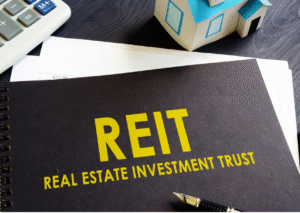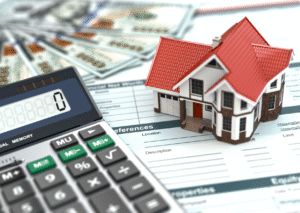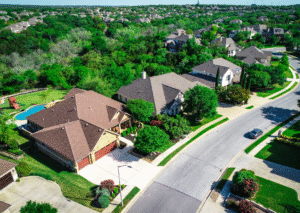What Is the Buy and Hold Mortgage Terms Strategy?
The buy and hold mortgage terms strategy is one of the most reliable methods for building long-term wealth through real estate. At its core, this approach involves purchasing a rental property with financing, often through a buy and hold mortgage, and holding it for an extended period while renting it out. Over time, the investor benefits from monthly rental income, property appreciation, and the eventual payoff of the mortgage.
A “buy and hold mortgage” typically has terms that align with long-term property ownership. These terms might differ from traditional residential mortgages, as lenders structure them with investors in mind. Understanding these terms is crucial because they affect how much profit can be generated and how sustainable the investment will be.
Why Are Buy and Hold Mortgage Terms Important for Investors?
Mortgage terms shape how an investor’s portfolio grows. Factors such as loan length, interest rate, amortization schedule, and down payment requirements influence the overall return on investment.
- Loan Length: Longer terms (e.g., 30 years) usually mean lower monthly payments but higher total interest paid.
- Interest Rate: Even a small change in interest rate can significantly affect profitability.
- Amortization Schedule: Determines how quickly equity builds over time.
- Down Payment Requirements: Typically higher for investment properties compared to primary residences.
These terms determine whether a property generates positive cash flow, breaks even, or results in negative returns. By carefully structuring buy and hold mortgage terms, investors can create predictable and sustainable income streams.
How Does the Buy and Hold Strategy Compare to Other Real Estate Financing Options?
While buy and hold mortgages are ideal for long-term rentals, real estate investors often explore multiple financing options to diversify strategies and optimize returns. For example:
- Fix & Flip Loans are short-term loans for properties that need renovation before resale. These are best for quick turnaround investments.
- BRRRR Financing (Buy, Rehab, Rent, Refinance, Repeat) allows investors to recycle capital and scale portfolios quickly.
- Cash-Out Refinance lets owners pull equity from existing properties to fund new acquisitions.
- DSCR Loans (Debt Service Coverage Ratio) are based on rental property income rather than personal income, making them accessible for investors with multiple mortgages.
- New Construction Loans support building new properties from the ground up for future rental or sale.
Each of these financing solutions complements the buy and hold approach, allowing investors to adapt depending on their goals.
What Are the Typical Terms of a Buy and Hold Mortgage?
Buy and hold mortgages come with terms that are specifically designed for rental property ownership. Common elements include:
- Interest Rates: Often slightly higher than traditional home loans since investment properties carry more risk.
- Down Payments: Usually 20%–25% of the property value.
- Amortization Periods: Typically 15 to 30 years, depending on the lender.
- Qualification Standards: Credit score, income, debt-to-income ratio, and rental property potential are considered.
- Prepayment Penalties: Some lenders include these, making it costly to pay off the loan early.
Understanding these terms before committing is critical. They influence how quickly an investor can build equity and how profitable the property will be over time.
How Can Investors Use Buy and Hold Mortgages to Build Wealth?
The strategy of buy and hold mortgage terms is rooted in patience. Wealth is built through:
- Cash Flow: Monthly rental income exceeding expenses.
- Appreciation: Property value typically increases over time.
- Equity Paydown: Tenants essentially help pay down the mortgage through rent.
- Tax Benefits: Mortgage interest and property expenses may be deductible under U.S. tax law (IRS, 2024).
By holding a property long enough, an investor benefits from compounding growth—rental increases, equity build-up, and appreciation all working together.
What Risks Should Investors Consider with Buy and Hold Mortgage Terms?
Like any investment, buy and hold mortgages come with risks:
- Vacancy Periods: A property without tenants still requires mortgage payments.
- Maintenance Costs: Properties must be maintained, and unexpected repairs can be expensive.
- Market Fluctuations: Property values may decline temporarily, affecting refinancing options.
- Financing Challenges: Rising interest rates can affect profitability for new acquisitions.
Mitigating these risks involves careful property selection, conservative financial planning, and using flexible financing options when necessary.
How Do Buy and Hold Mortgage Terms Support Portfolio Growth?
One of the greatest benefits of buy and hold mortgage terms is scalability. Investors can leverage rental income and property appreciation to expand their portfolio. For example:
- Cash-Out Refinance can unlock equity for purchasing additional rentals.
- BRRRR Financing allows reinvestment of initial capital into multiple properties.
- DSCR Loans make it easier to qualify based on property performance instead of personal income.
By blending these financing strategies, investors can steadily grow from one property to multiple units, eventually achieving financial independence.
Where Can Investors Find Reliable Buy and Hold Mortgage Solutions?
Investors should look for financing partners who specialize in real estate investment solutions. A trusted lender that understands investor needs will provide more flexible terms than traditional banks.
No Limit Investments offers a wide range of services tailored to investors, including:
- Fix & Flip Loans
- Buy & Hold Mortgages
- BRRRR Financing
- Cash-Out Refinance
- DSCR Loans
- New Construction Loans
- Real Estate Financing Solutions
By working with a specialized lender, investors can access financing that aligns with their goals and supports both short-term projects and long-term wealth strategies.
What Steps Should New Investors Take Before Applying for Buy and Hold Mortgages?
For beginners, preparation is key. Before applying for buy and hold mortgage terms, investors should:
- Review their credit profile and improve scores if necessary.
- Save for a substantial down payment (20%–25%).
- Research rental markets to ensure properties can generate positive cash flow.
- Understand the lender’s qualification requirements.
- Explore financing solutions like DSCR loans or cash-out refinancing for flexibility.
With these steps, investors enter the buy and hold strategy more confidently, reducing the risk of financial strain.
Why Should Investors Consider No Limit Investments for Buy and Hold Mortgage Terms?
Investors thrive when they have the right financing partner. No Limit Investments stands out because it offers comprehensive solutions for real estate financing. From helping beginners with their first buy and hold property to supporting seasoned investors with portfolio expansion, they provide tailored loan products designed for long-term success.
By combining services like fix & flip loans, BRRRR financing, cash-out refinance, DSCR loans, and new construction loans, they give investors multiple pathways to scale effectively. With the right buy and hold mortgage terms, investors can take advantage of compounding growth, building a strong portfolio that supports wealth creation for years to come.
How Can You Start Building Wealth Through Buy and Hold Mortgage Terms?
Are you ready to unlock the potential of buy and hold mortgage terms? Explore tailored financing solutions with No Limit Investments. Whether you’re starting with your first property or scaling a large portfolio, their expertise and flexible loan products provide the tools you need to succeed.
Final Thoughts
The buy and hold mortgage terms strategy is a time-tested path to wealth. By carefully analyzing loan structures, leveraging rental income, and integrating additional financing strategies, investors can achieve financial freedom. While challenges exist, aligning with a financing partner like No Limit Investments ensures investors have the flexibility, tools, and support to turn real estate opportunities into lasting success.
Works Cited
Internal Revenue Service. Publication 527 (2024): Residential Rental Property. IRS, 2024. www.irs.gov/publications/p527.
U.S. Department of Housing and Urban Development. Rental Housing Finance Survey. HUD, 2023. www.huduser.gov.
National Association of Realtors. Investment and Vacation Home Buyers Survey. NAR, 2023. www.nar.realtor.
Frequently Asked Questions
- What are buy and hold mortgage terms?
Buy and hold mortgage terms are the specific conditions of a long-term loan used to purchase investment properties. These terms typically include the loan length, interest rate, down payment requirements, and repayment schedule, all designed to support investors who plan to keep rental properties for many years. - How do buy and hold mortgage terms differ from traditional home loans?
Unlike traditional mortgages for primary residences, buy and hold mortgage terms usually require higher down payments (20%–25%) and have slightly higher interest rates. They are structured for rental income stability and long-term investment growth rather than personal housing. - Can buy and hold mortgage terms be combined with other financing strategies?
Yes. Investors often pair buy and hold mortgages with strategies like BRRRR financing, cash-out refinancing, or DSCR loans to maximize portfolio growth. No Limit Investments offers flexible solutions that allow these approaches to work together. - What risks should I consider before committing to buy and hold mortgage terms?
Investors should be prepared for possible vacancies, market downturns, and maintenance expenses. Planning for reserves and using financing options such as DSCR loans or cash-out refinancing can help manage these risks. - Where can I find reliable buy and hold mortgage solutions?
Specialized lenders like No Limit Investments provide tailored financing solutions for investors. Their services include buy and hold mortgages, fix & flip loans, BRRRR financing, cash-out refinancing, DSCR loans, new construction loans, and other real estate financing solutions designed for long-term growth.







